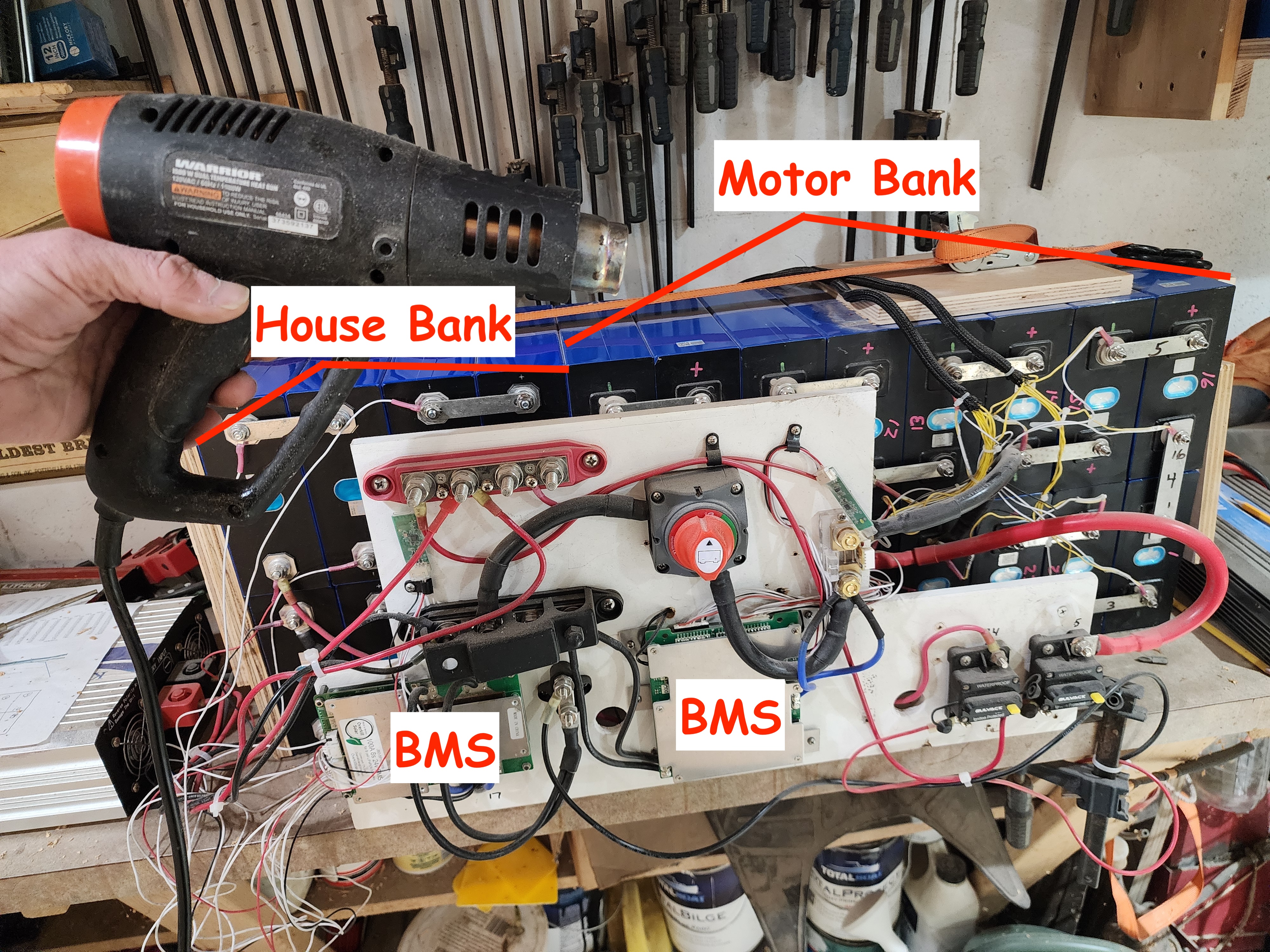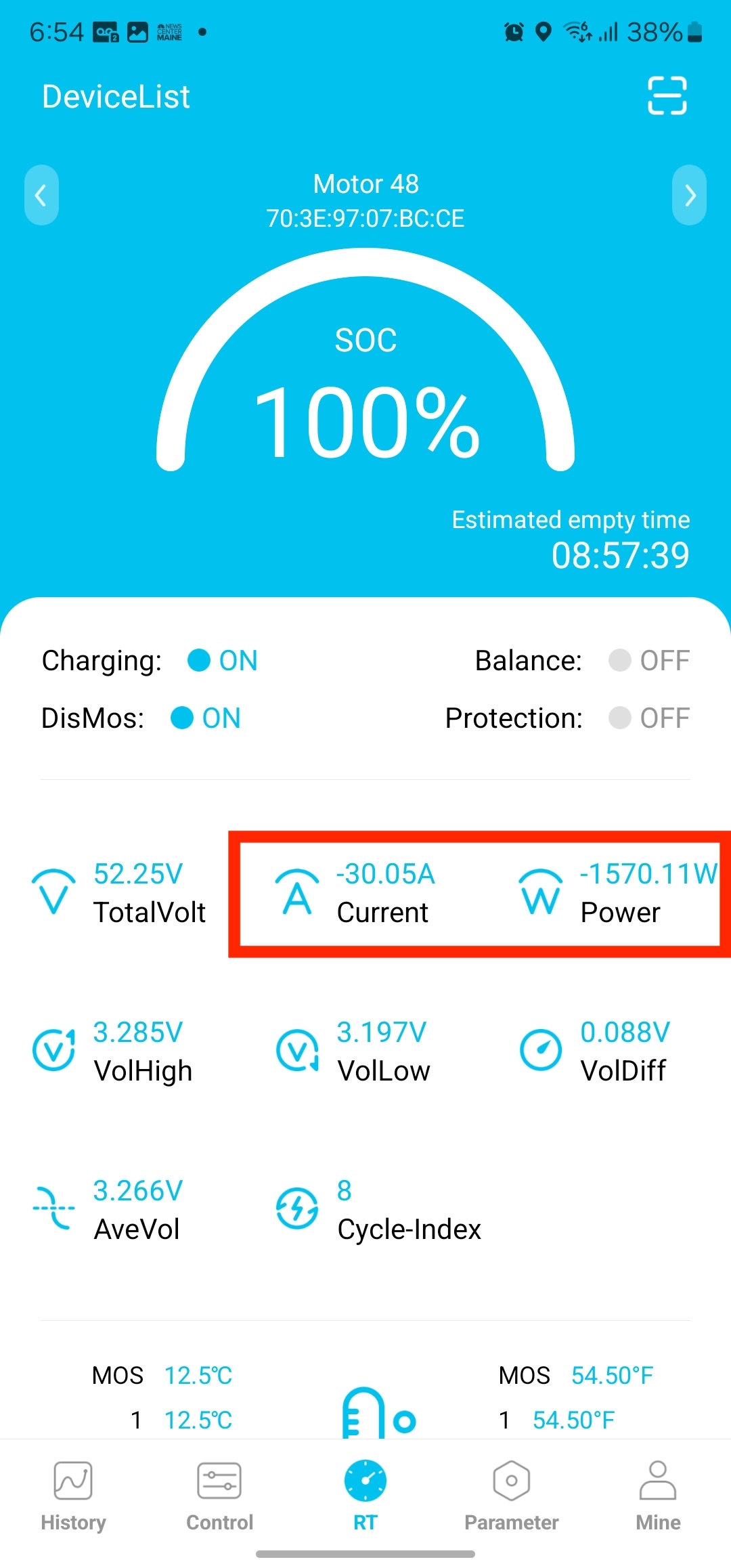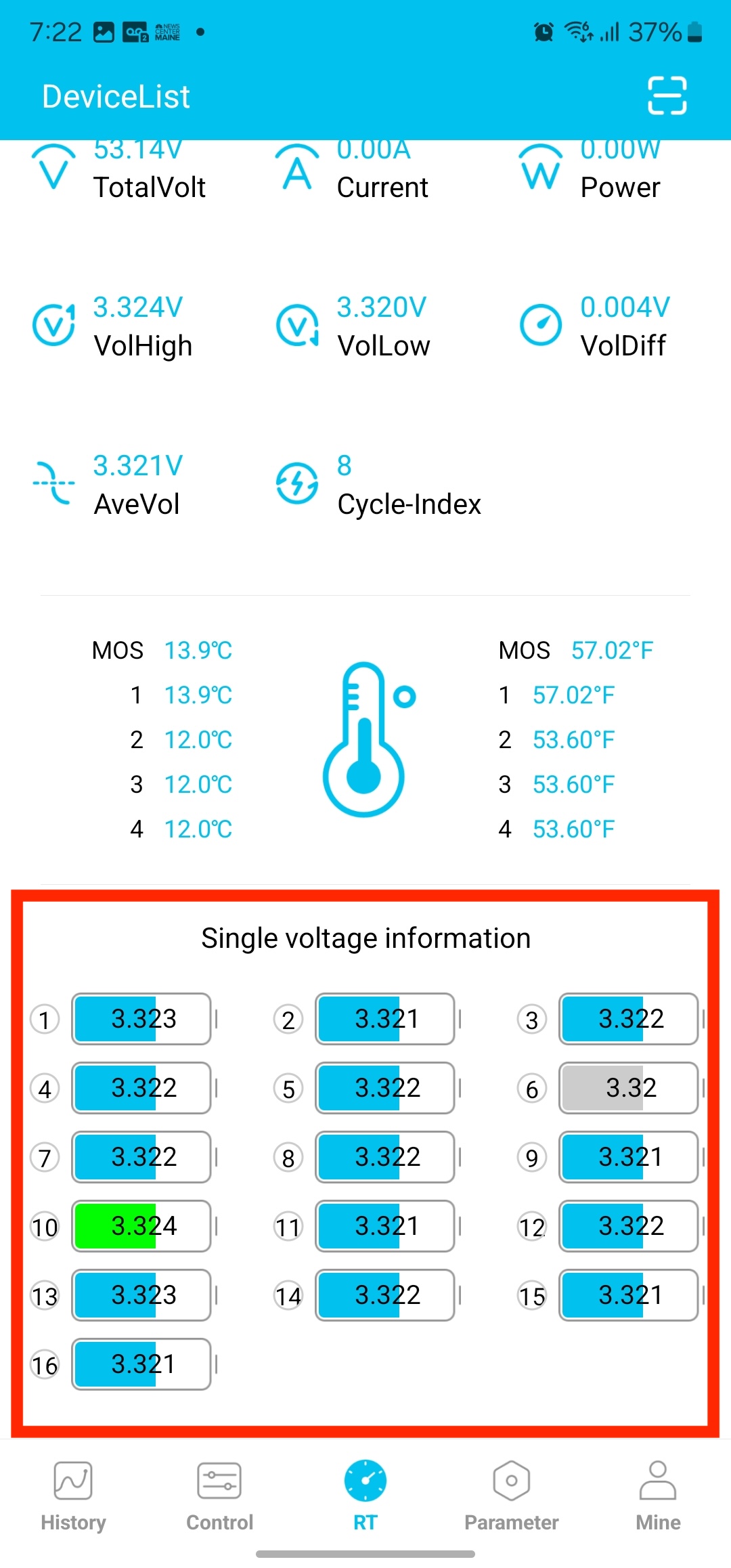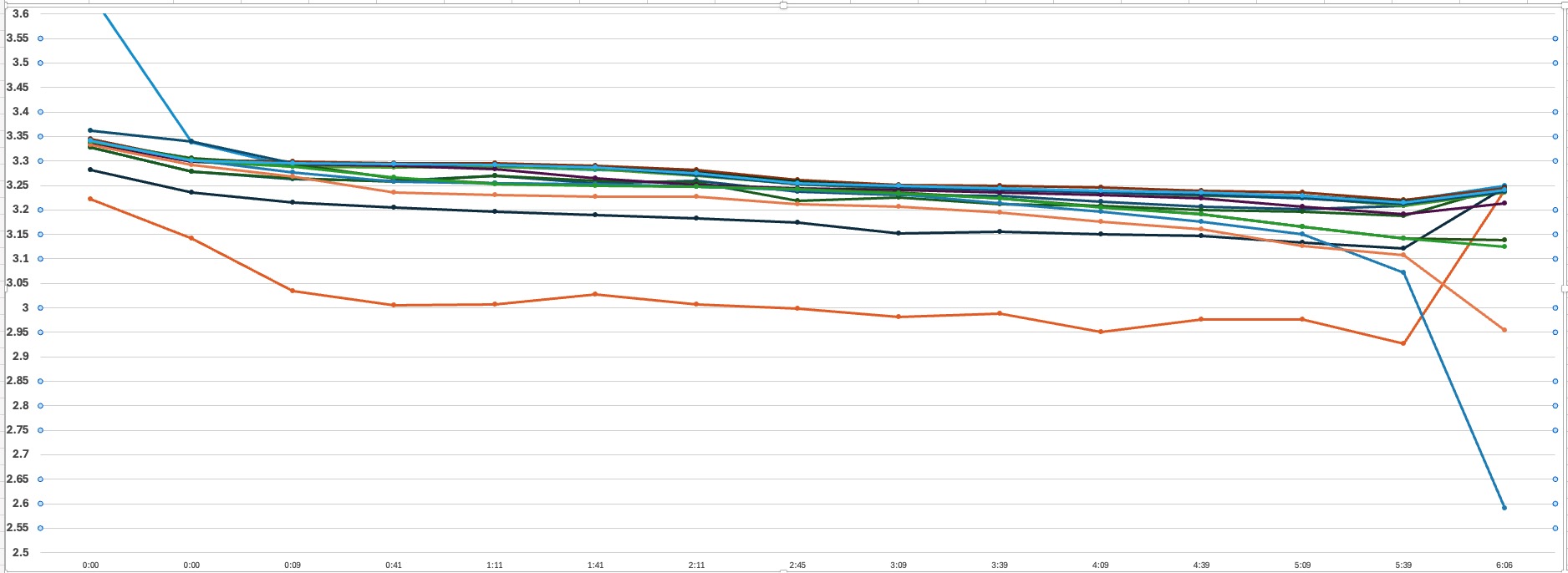I frequently get asked about our electric motor and batteries on our sailboat Laurana, so I thought I would share some testing I’m doing this winter. If you’re not aware, Laurana is a 1979 30’ Sabre sailboat that we refit over 16 months, starting in the fall of 2000.
Laurana was converted to electric propulsion from its original 13HP MD7A diesel engine. The diesel was in need of repairs, and after much research, we decided to switch to electric instead.
This topic brings up many stories about the various projects involved, but today, I wanted to share one in particular. Our battery bank is now three years old, and I was interested in testing its condition. We also recently bought new batteries to install a battery bank in our RV, which we use for traveling when Julie picks up a travel nursing job.
During the winter, I remove the batteries from the boat. While LiFePO4 batteries can freeze without losing capacity, they cannot be charged when below freezing. Rather than risk constant temperature cycling from October through May, I choose to store them indoors.

Battery Details
The batteries I’m using are “3.2V 280Ah LiFePO4” cells. In 2000, the ones I purchased were considered “Class B”, meaning they weren’t guaranteed to fully meet specifications. The batteries I purchased this year are Class A, which are now more readily available and higher quality. The picture attached shows where I bought the new ones.
These batteries are rated for 3,000 cycles. Currently, our motor bank has 6 cycles and the house bank has 24 cycles, even after three years of use.
Testing Goals & Setup
I wanted to compare older Class B batteries with the newer Class A models. My goal was to select the best Class B batteries for the motor bank (16 batteries = 48V system) and use the new Class A batteries for the house bank (8 batteries = 24V system).
To achieve this, I performed a capacity test on both the 24V and 48V battery banks to identify:
✔ The strongest batteries in the house bank
✔ The weakest batteries in the motor bank
After testing, I swapped the three best house bank batteries with the three weakest motor bank batteries. The removed batteries will be repurposed for the 24V RV battery bank.
Capacity Test Method
For each test:
✔ I fully charged the battery bank
✔ I discharged it using an inverter and heat gun
✔ Every 30 minutes, I took a screenshot of the battery monitoring system
✔ After the test, I entered all data into a spreadsheet for analysis
The 48V bank had a constant current draw of ~30A (~1500W load), which is approximately our typical power usage aboard Laurana. This allows us to travel at 3.5–4 knots, depending on wind and waves.
The attached capacity test results for the 48V battery bank highlight the three weakest batteries. I then performed the same test on the 24V house bank to identify the three strongest batteries. After swapping them, I recharged the system.


Test Results
For any battery bank, the weakest cell determines overall capacity.
•The initial capacity test of the 48V motor bank measured at ~220Ah (compared to the rated 280Ah).
•This result is expected, as Class B batteries have greater variability in performance.
•The new 24V house bank (Class A batteries) performed above rated capacity, measuring at 306Ah (~10% over spec).
I have yet to complete the final capacity test after the battery swap, but I am optimistic that the overall performance of both banks will improve.


Final Thoughts
This test helps ensure that our electric propulsion system remains reliable and efficient. If you have any battery-related topics or winter boat projects you’d like to share, We'd love to year your story!
Happy sailing,
Russ Moser
SV Laurana
Comments
You must logged in on the sidebar to view and add comments.


